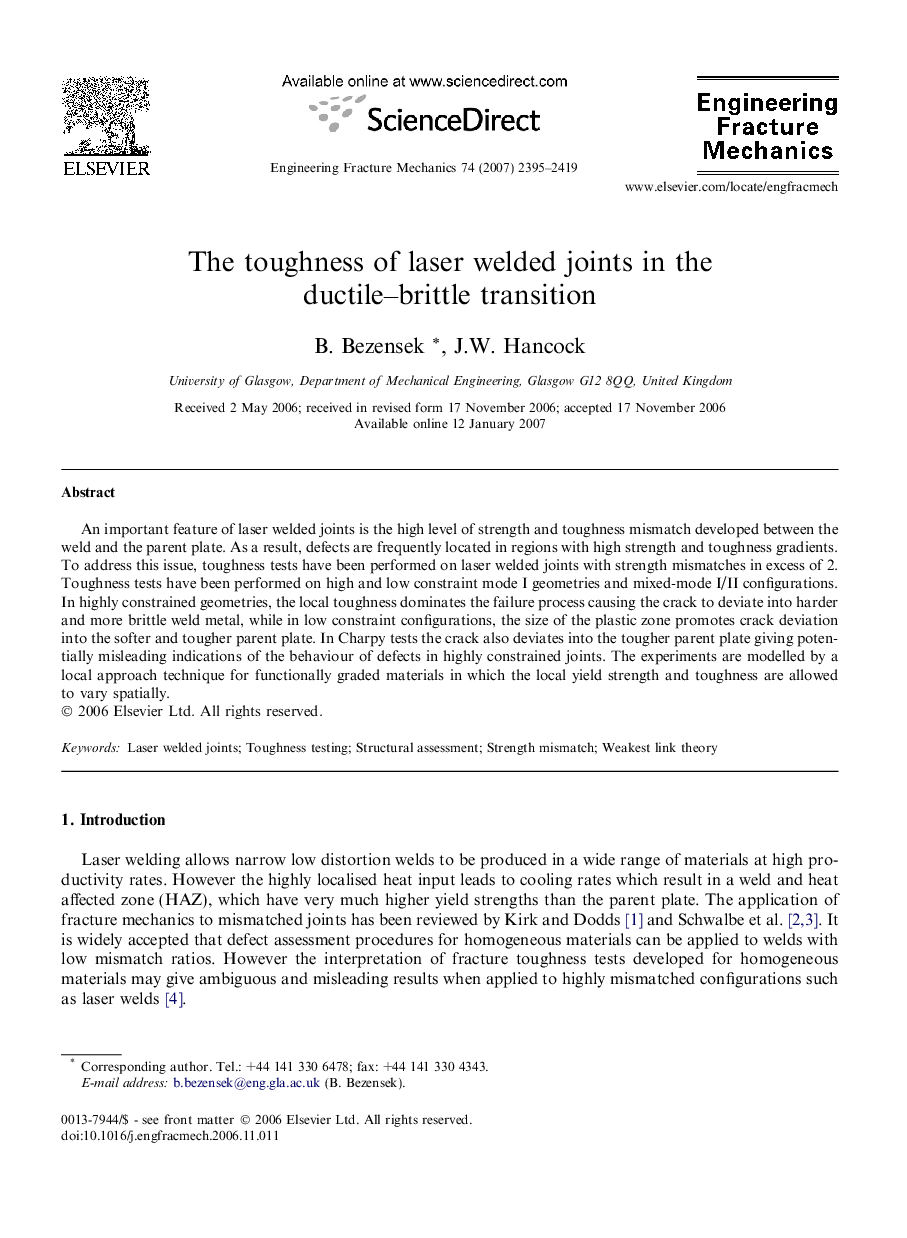| Article ID | Journal | Published Year | Pages | File Type |
|---|---|---|---|---|
| 768047 | Engineering Fracture Mechanics | 2007 | 25 Pages |
An important feature of laser welded joints is the high level of strength and toughness mismatch developed between the weld and the parent plate. As a result, defects are frequently located in regions with high strength and toughness gradients. To address this issue, toughness tests have been performed on laser welded joints with strength mismatches in excess of 2. Toughness tests have been performed on high and low constraint mode I geometries and mixed-mode I/II configurations. In highly constrained geometries, the local toughness dominates the failure process causing the crack to deviate into harder and more brittle weld metal, while in low constraint configurations, the size of the plastic zone promotes crack deviation into the softer and tougher parent plate. In Charpy tests the crack also deviates into the tougher parent plate giving potentially misleading indications of the behaviour of defects in highly constrained joints. The experiments are modelled by a local approach technique for functionally graded materials in which the local yield strength and toughness are allowed to vary spatially.
